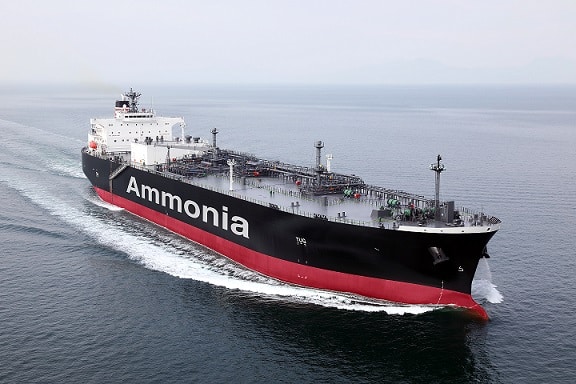Japan’s NYK focuses on LNG, ammonia in marine energy
NYK Group Targets Decarbonization with Alternative Fuels

NYK Group, a leading Japanese shipping conglomerate, is taking significant steps towards decarbonizing its operations by transitioning to alternative fuels. The company plans to initially focus on liquefied natural gas (LNG) before shifting to ammonia by the end of the decade. With a goal to reduce greenhouse gas emissions by 45% from 2021 levels by 2030 and achieve net-zero emissions by 2050, NYK is committed to a phased approach in its fuel transition strategy.
Phased Transition to Alternative Fuels
NYK Group operates a diverse fleet of over 800 vessels, and its current bunker consumption stands at 3.3 million metric tons per year, primarily reliant on conventional oil-based fuels. Tsutomu Yokoyama, an executive officer at NYK responsible for fuel transition, emphasized the need for a gradual shift. He noted that changing fuel types all at once is impractical due to the long lifespan of ships, which can last up to 20 years. Instead, NYK plans to acquire new ships capable of using alternative fuels during fleet renewals.
As of March 2023, NYK has 30 dual-fuel ships that can operate on both conventional and alternative fuels, with most designed for LNG. The company aims to increase this number to 102 within five years, excluding vessels that transport LNG as cargo but can also utilize it as bunker fuel. Yokoyama stated, “We are encouraging ourselves to build LNG dual-fuel vessels,” and highlighted that for new builds, the company prioritizes LNG-fueled ships.
LNG has gained traction as a preferred alternative marine fuel, helping shipowners manage compliance costs amid stricter greenhouse gas regulations. Industry estimates suggest that LNG can reduce greenhouse gas emissions by 20% to 30% compared to traditional oil-based fuels. NYK has already begun using bio-LNG on its car carriers in Europe, collaborating with Titan for deep decarbonization efforts.
Future Fuel Innovations and Collaborations
In addition to LNG, NYK is exploring other alternative fuels, including liquefied petroleum gas (LPG) and methanol. The company reported a use of 6,287 metric tons of bio bunkers in the fiscal year 2023-24. Yokoyama mentioned the potential to increase the use of biofuels in Singapore in the future. Last year, NYK launched the world’s first ammonia-capable tugboat and is developing a 40,000-cubic meter gas carrier designed to run on ammonia, expected to be one of the first ammonia-fueled ships for deep-sea trades upon delivery in 2026.
Looking ahead, Yokoyama indicated that NYK plans to order more ammonia-capable vessels by 2028-2029, recognizing the fuel’s significant role in the company’s future. The shipping industry is increasingly optimistic about the potential of green ammonia as a marine fuel, especially as its production is anticipated to rise alongside renewable hydrogen initiatives.
NYK is also working closely with Japanese utility firms to secure LNG supplies, leveraging its position as one of the world’s largest LNG tanker operators. This collaboration aims to ensure a steady supply of fuel for both marine and power generation needs. Despite the challenges in securing sustainable marine fuels, NYK is optimistic about arranging alternative fuel supplies for its liner trades, which include containerships and car carriers tied to long-term contracts.
While NYK acknowledges the need for long-term commitments in sustainable fuel production, Yokoyama expressed caution due to the financial risks involved. “Long-term commitments generate some financial risks,” he stated, highlighting the complexities of navigating the evolving landscape of marine fuels.
